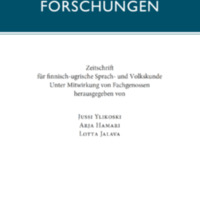Suomalais-Ugrilainen Seura eli SUS on yksi Suomen vanhimmista ja suurimmista tieteellisistä seuroista. Perustamisestaan lähtien (1883) seura on pyrkinyt edistämään uralilaisten ja altailaisten kielten ja näitä kieliä puhuvien kansojen kulttuurien, kansatieteen, kansanrunouden ja esihistorian tutkimusta. Seuran toiminta painottuu alan tutkimusten julkaisemiseen. Lisäksi vuosittain pidetään yhdeksän kokousta, joiden yhteydessä kuullaan seuran toimialaan liittyviä tieteellisiä esitelmiä. Suomalais-Ugrilainen Seura myös tukee stipendein ja apurahoin seuran työaloihin liittyvää tieteellistä tutkimusta ja keruuta. Sen arkisto ja kokoelmat ovat tutkijoiden käytettävissä.
Seuran teoksia myy kirjakauppa Tiedekirja.
Seuraa Suomalais-Ugrilaista Seuraa Facebookissa, Instagramissa ja X:ssä!
Uusin julkaisu
Finnisch-Ugrische Forschungen 69

Luobbal Sámmol Sámmol Ánte (Ante Aikio), Are there Proto-Slavic loanwords in Saami?Maria Fedina, Komi language sustainability in urban Syktyvkar:…
